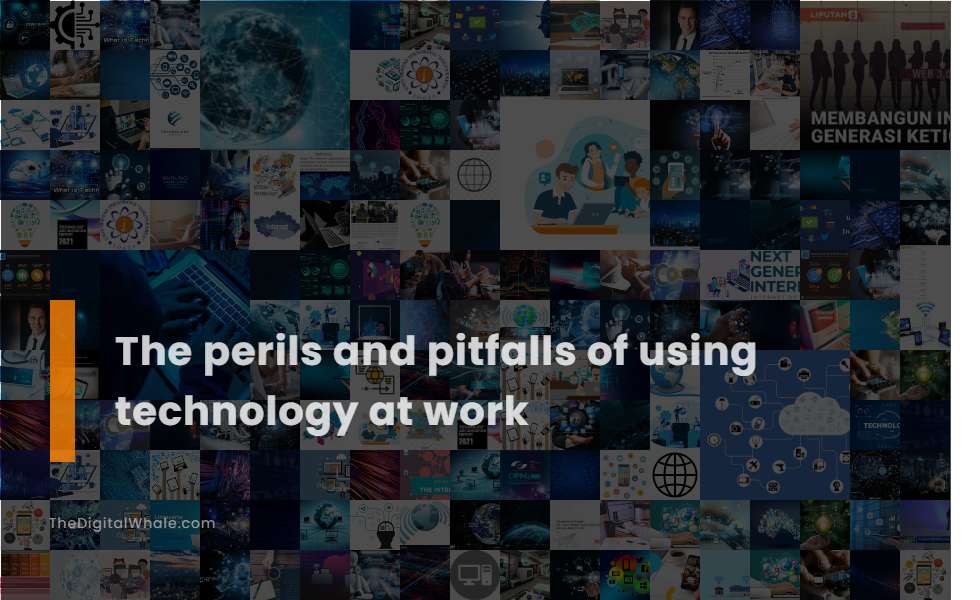The Perils and Pitfalls of Using Technology at Work
What are some ways technology can have a negative effect on the workplace? What are some negative impacts of technology in the workplace? Let's find out more about The Perils and Pitfalls of Using Technology at Work.

Constant Distractions and Decreased Productivity
Constant digital distractions, such as emails, instant messages, and social media, significantly hinder workplace productivity, leading to increased stress, lower morale, and higher fatigue among employees. These pervasive interruptions highlight the need for strategic management of communication tools to maintain focus and efficiency. According to Business News Daily, digital distractions, including smartphones and internet use, are major productivity killers. Employers often cite these distractions as primary contributors to stress, anxiety, and decreased focus, emphasizing the importance of minimizing them to boost workplace productivity.
Loss of Interpersonal Communication Skills
The use of technology in the workplace can lead to a loss of interpersonal communication skills due to the absence of nonverbal cues, reduced eye contact, and a lack of emotional depth in virtual interactions, resulting in weakened social connections and potential miscommunications. As discussed on Primeast, these challenges are compounded by the digital messages replacing face-to-face interactions, which can easily be misinterpreted. The lack of contextual information that eye contact and tone of voice provide often results in less effective collaboration and deeper misunderstandings, underscoring the importance of finding a balance between digital communication and personal interaction to maintain robust social skills.
Constant Upgrades and Maintenance Costs
Using outdated technology at work incurs significant costs due to high maintenance and repair needs, frequent breakdowns, expensive replacement parts, decreased productivity, and increased security vulnerabilities. This highlights the necessity of constant upgrades to maintain efficiency and security. According to insights from Athens Micro, the financial and operational benefits of regular upgrades are emphasized by the fact that outdated technology can result in substantial annual maintenance costs, along with losses in productivity, forgone profits, and increased risks of security breaches, employee dissatisfaction, and customer disappointment. This underscores the importance of staying current with technology to secure a competitive edge in the business landscape.
Security Risks and Data Breaches
The advent of technology in the workplace, particularly in remote working environments, introduces substantial security challenges and data breach threats, including phishing attacks, the use of unsecured Wi-Fi networks, poor password practices, unpatched software, and the potential misuse of sensitive data on personal devices and in public spaces. Remote working can further amplify these risks, underscoring the critical necessity for comprehensive security measures such as VPNs, encryption, and stringent access controls to safeguard against data breaches. For more insights on how to manage these challenges, visit the The Challenges of DLP for Remote Working resource center. These solutions are instrumental in mitigating the risks associated with malware, ransomware, and data leakage in a distributed workforce.
Lack of Clear Vision or Strategy in IT Projects
A lack of clear goals and objectives is a major reason for IT project failure, leading to directionless operations, vague methods, and reduced team efficiency. Around 37% of projects are affected by this issue, highlighting its significance. Setting unclear goals and objectives is a common IT project management mistake that can significantly hinder project success. This emphasizes the need for a clear vision and defined objectives to avoid project pitfalls. For more insights on how to prevent such failures, visit the informative Project Insight Blog which delves into numerous factors impacting project outcomes.
Related:
What are the five trends shaping the future of work? What are the biggest challenges facing organisations in the fourth revolution? Let's find out more about 9 To 5 Or 24/7? the Changing Face of Work In A Digital World.
Forgetting About the Customer in IT Implementations
Forgetting about the customer in IT implementations can lead to a software-centric approach that neglects the customer's needs and problems, resulting in unnecessary customizations and a lack of alignment with the customer's business processes and requirements. A Customer-Centric Approach, on the other hand, places the customer at the center of the implementation, ensuring that the technology solves the customer's problems effectively and enhances their experience. For more insights on this, visit the blog post on Accruent.
Insufficient Automation and Integration of Technologies
The integration of robotics and automation in the workplace presents significant challenges, ranging from compatibility issues with existing infrastructure to high initial costs and technical complexity. These challenges are compounded by workforce adaptation difficulties and the need for regular maintenance to prevent downtime and system failures. Moreover, adopting new technology at work often encounters hurdles like resistance to change, budget constraints, integration issues, and security concerns. Addressing skill gaps and ensuring adequate user experience is crucial for successful deployment. To explore effective solutions and strategies, it is essential to focus on informed approaches, such as those suggested by FulfillmentIQ, to overcome these barriers and achieve seamless and effective implementation.
Poorly Designed Organizational Structures and Processes
A poorly designed organizational structure can lead to reduced efficiency and productivity, low employee morale and engagement, high turnover rates, and missed opportunities for growth and innovation, highlighting the need for clear roles, effective collaboration, and aligned decision-making processes. In the realm of IT, such structures and processes can result in unnecessary bureaucracy, bottlenecks, and inter-departmental conflicts. This underscores the importance of implementing efficient decision-making processes, service management best practices, and a flatter organizational structure to overcome these pitfalls and ensure smoother operations.
Technostress and Work-Life Balance Issues
Technostress, a phenomenon characterized by factors such as techno-overload, techno-invasion, and techno-uncertainty, significantly compromises work-life balance and organizational performance. This leads to increased stress, role overload, and role conflict, resulting in reduced job satisfaction and overall well-being issues. The constant connectivity enabled by advanced technologies blurs the boundaries between work and personal life, fostering an "always-on" culture that can cause work-related stress and longer working hours. This decline in overall well-being underscores the need for clear boundaries and strategies to maintain a healthy work-life balance. Indeed, technostress can cause physical, emotional, and psychological symptoms such as information overload, concentration problems, and burnout. To manage Technostress, it is essential to employ strategies like setting breaks, limiting social media use, and turning off personal devices to mitigate its impact.
Misuse of Social Media and Overreliance on Technology in Meetings
Misuse of technology at work, including social media, can lead to distractions such as scrolling through social media, streaming videos, and participating in non-work-related online activities, which can reduce productivity and increase the risk of cyber attacks and data breaches. Moreover, overreliance on technology in meetings can result in meeting overload, leading to decreased productivity, increased overtime, and employee fatigue, as excessive meetings hinder the ability to complete work and cause significant emotional and mental strain.
Related:
Will people eventually stop working from home? What are the benefits of voice technologies in the office? Let's find out more about From Office To Home - How Technology Is Changing Where We Work.
